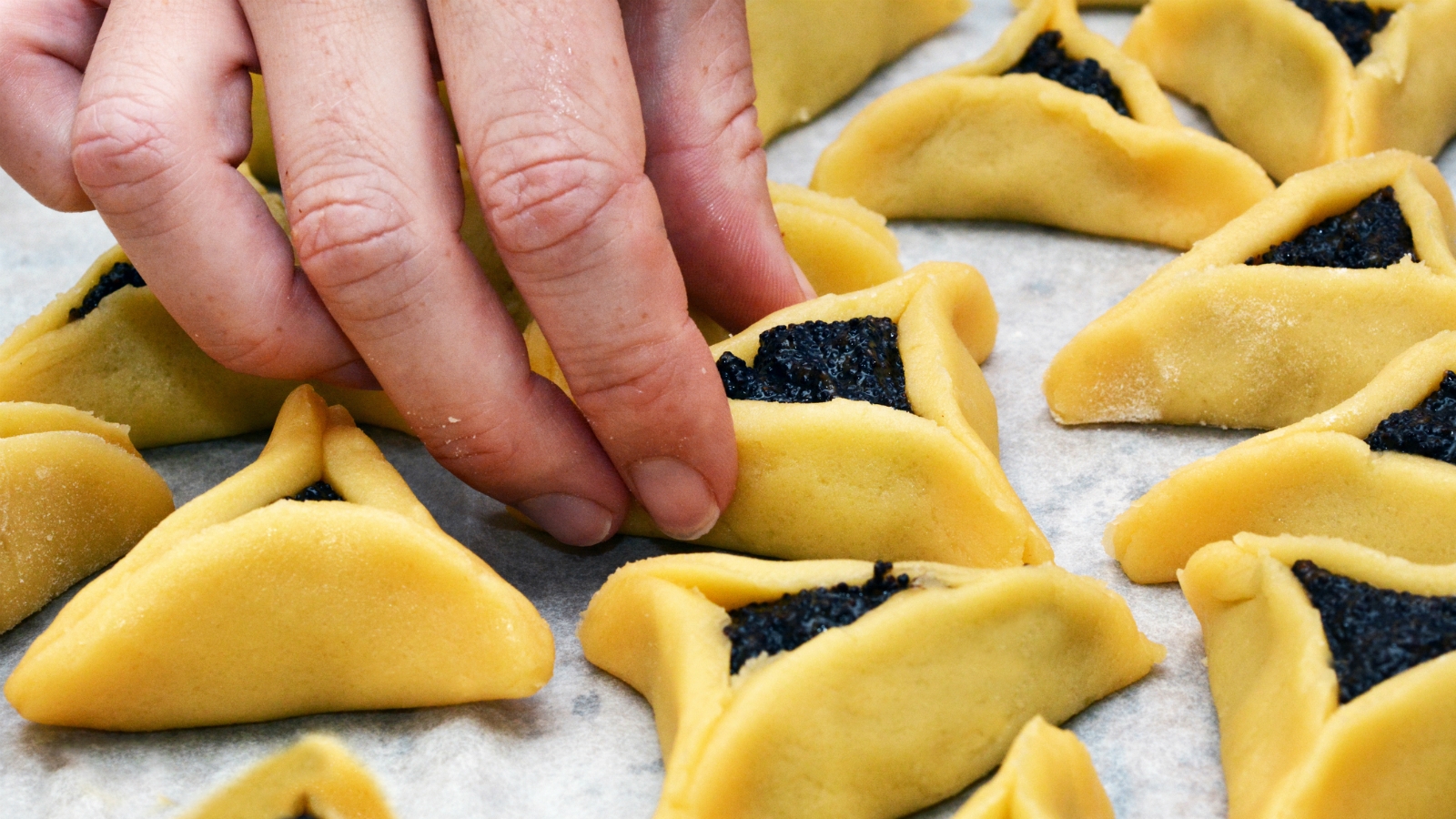Hamantasch
hamantaschen, hamentashen, oznei haman, אוזן המן
A hamantash is an Ashkenazi Jewish triangular filled-pocket pastry associated with the Jewish holiday of Purim. The name refers to Haman, the villain in the Purim story. In Hebrew, hamantashen are also known as אוזני המן (oznei Haman), meaning "Haman's ears". "Haman's ears" also refers to a Sephardic Purim pastry, "Orejas de Haman", thought to originate in Spain and Italy, that is made by frying twisted or rolled strips of dough. Traditionally, the dough for hamantashen was made with yeast. With the invention of baking powder during the 1840s and its wide adoption during the first half of the twentieth century, baking powder supplanted yeast, and hamantashen dough became a cookie rather than pastry dough. To shape a hamantash, a filling is placed in the center of a circle of dough, which is then either folded in half and shaped into a triangle or the sides are brought to the center to form a triangle. The oldest and most traditional filling is mohn (poppy seed paste), with powidl or lekvar (prune jam) a close second. The cookie dough variety has spawned many different fillings, traditionally sweet (although savory varieties have become popular as well). Most popular are various jams, especially apricot and raspberry, but also date, raisins, apple, vanilla pastry cream with chocolate chips, cherry, fig, chocolate, dulce de leche, halva, caramel, or cheese. The dough varies from hard like shortbread to a soft yeast dough.
Source: Wikipedia
:max_bytes(150000):strip_icc()/2121650-55e6ea68bdaa43d0be9f56b168bbf4a2.jpg)


:max_bytes(150000):strip_icc()/beet-cheddar-apple-tarts-7002084-1218-1bb41b2ab9224da6b70cf3ba1bda052b.jpg)




:max_bytes(150000):strip_icc()/jewish-hamantaschen-cookies-recipe-1136141-hero-01-e0029f9773664d41afad798529c0c972.jpg)






